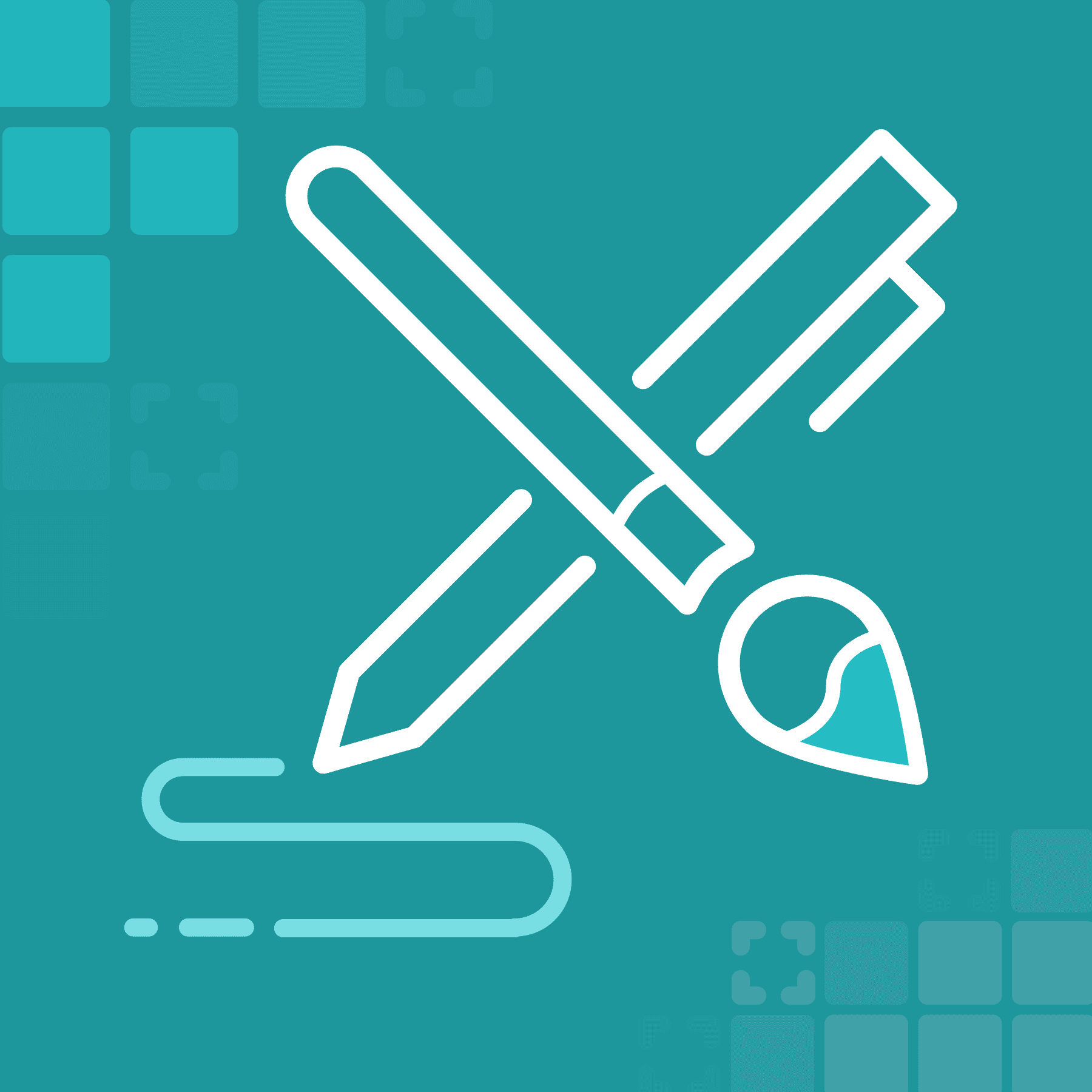This guest blog post was written by Jessica Johnston, Manager of Content and Publishing at Cellebrite, a digital intelligence and forensics company. Johnston has an extensive background in technical writing and editing and has designed and implemented MadCap Flare projects in the areas of legal technology, public safety, and financial services. She is passionate about building innovative solutions to complex problems in the learning and development space.
An established curriculum development process is a solid foundation for any education or training program. Setting standards around how the curriculum is created, updated, and maintained ensures that valued subject matter expert (SME) input, instructional design best practices, and industry standards are considered in every step of the content creation process. Using educational course creation software for universities helps streamline this process, ensuring that SMEs’ insights, instructional design best practices, and industry standards are incorporated seamlessly.
Though technical writers may not be the decision makers in the curriculum development process, they are instrumental in ensuring quality content reaches students. For a technical writer, curriculum development includes a few standard elements:
- It must begin with consensus among vested parties. For a technical writer involved in producing training content, this might look like becoming a member of a technical advisory committee (TAC) or design committee.
- A clearly defined relationship between courses in the training catalog, defining a progression within a learning path, when defined.
- Defining student assessment of established learning objectives.
- A method for implementing necessary revisions and improvements to the curriculum.
Teaming Up with the Experts
Since the focus of training can go beyond simply instructing students on how to use new software, to the complexities of the why behind that how, it is vital that the curriculum development process not only consider current industry standards but also SMEs’ experience-based expertise. Thus, establishing a TAC or design committee becomes a must.
How you interact with SMEs may vary depending on what drives your organization’s training curriculum. Is the training tool-based? If so, you will want your SMEs to have a close relationship with the product team to effectively plan for future updates to the course. A TAC might consist of SMEs, SDK documentation specialists, the writing team and instructional designers, leadership, and anyone else who has direct influence over the curriculum.
It is important that writers meet with SMEs early and as often as necessary not only to ensure technical accuracy of content, but to define the boundaries of a course.
Will it be a beginner, intermediate, advanced, or expert offering?
Are there any prerequisites?
Will the course exist as part of a defined learning path?
Will the course include a final assessment?
If so, will it consist of a practical or knowledge-based exam, or both?
These questions are important at the inception of a course, but they should not be forgotten as a course evolves over time. Because curriculum development is an iterative process, the TAC should agree upon a defined cadence for updating the material and curriculum design. For example, will writers implement changes following each release cycle? Or, will the TAC choose to base update frequency on the popularity of a course? In most cases, you will find that more popular offerings are deserving of more frequent updates.
However, the needs of the business, market research, and SME input will ultimately drive these decisions. The writer should be involved from the start of the project to ensure proper planning and involvement throughout the project.
Defining Where Courses Fit
A well planned curriculum path can have a significant impact on a student's learning experience. So, when writing a new training course, it is important to determine where a course fits within the existing course catalog as part of the curriculum planning. While this responsibility is not the writer’s, the result will directly influence some of the writer’s decisions and questions they will want to take to the TAC.
When we think about curriculum, we must think beyond the individual courses that are the sum of the whole. Some courses may naturally group together based on intended audience, theme, or tool.
For a writer to make informed decisions about a course’s objectives and the depth at which the material is explored, the writer should be aware of whether the course is part of a student learning path that leads to certification, and if it is, at what point on the path the course falls. An expert- level course will have higher degree learning objectives than those of a beginner course. For example, in a beginner course, a student might be expected to simply recall knowledge while a learner in an advanced course will be expected to call on higher- order critical thinking skills to apply their knowledge.
The writer will want to consider content reuse and overlap for courses on the same path. Perhaps a beginner course introduces a topic and a more advanced course on that path may revisit the topic in further detail. The technical writer is the teammate best equipped to report on content details, like how many times a topic is reused and where.
During the planning phase of curriculum development, the technical writer should be prepared to articulate whether proposed topics already exist in the library of training materials. If the content exists in any form, the TAC should decide whether or how to include that content in a new training offering.
Thinking About Content, Instructional Strategies, and Learning Assessments
You might wonder how a student learning and training path with a certification might impact content. Writers involved in curriculum development from the planning phase forward understand the importance of the relationship between student training material and course assessment materials.
Writers should ensure consistency in the application of instructional strategies across courses. Student exercises, instructor-led activities, knowledge checks, and the like should be formatted and organized consistently so that students are familiar with them across all courses. Writers should work with SMEs throughout the process to ensure that the course content aligns with its assessments, both practical and knowledge- based.
An easy way to ensure that assessments align with content across iterations is to map exam questions to course content. For example, noting in the topic file of the course materials where exam question one is sourced ensures that with future updates, writers will note the correlations and have a built-in action item to confirm that changes to the content do not impact the exam question.
Tackling Revisions
Another part of instructional design and curriculum planning is revising an existing course when necessary. The technical writer should facilitate the revision cycles for content development. Revisions include both technical and editorial. The TAC or similar committee will drive the need for technical changes, but the writer/writer team is responsible for ensuring that the content is expressed in a polished, cohesive way.
Each content update and thus, each revision, is an opportunity to create and fine- tune a curriculum more in tune with your training organization’s goals. Writers can work closely with the teammates in charge of managing assessment content to determine whether the overall content fits students’ needs. Those managing assessments and certifications will be aware of how students are performing on exams, and this performance can be a key indicator as to whether the content is meeting the needs of students.
Writers, who are almost always the teammate closest to the content, have a unique opportunity to make suggestions to effect timely change. In adult learning scenarios, the writer might also suggest a survey of the learners themselves to determine if the content is sufficient to meet students’ needs.
Ultimately, writers should use their content authoring skills to ensure that content is consistent in voice across the program and that it is written in a clear and concise manner at a level appropriate to the audience. They should employ their content management skills to leverage any opportunities for reuse and raise any flags manifested through content management to the greater team responsible for developing the curriculum.
Technical Writer, Instrumental to Curriculum Development
For the technical writer, developing instructional materials and curriculum content is not so different from other content authoring processes. It may be challenging to writers new to the task to become familiar with the different parts of the process. In curriculum development, the writer’s duties go beyond coordinating with development/QA teams and interviewing SMEs; they must become familiar with and effective at examining the larger library of content whilst working with a variety of other teammates whose input is equally important in the development process.
The writer’s role goes beyond putting the pen to paper to document the curriculum content. They are key in building and maintaining a cohesive program that meets students’ needs course after course. If you are interested in collaborating with fellow writers in person in a conference setting, explore the MadWorld Conference and see what benefits come with attending this event!










